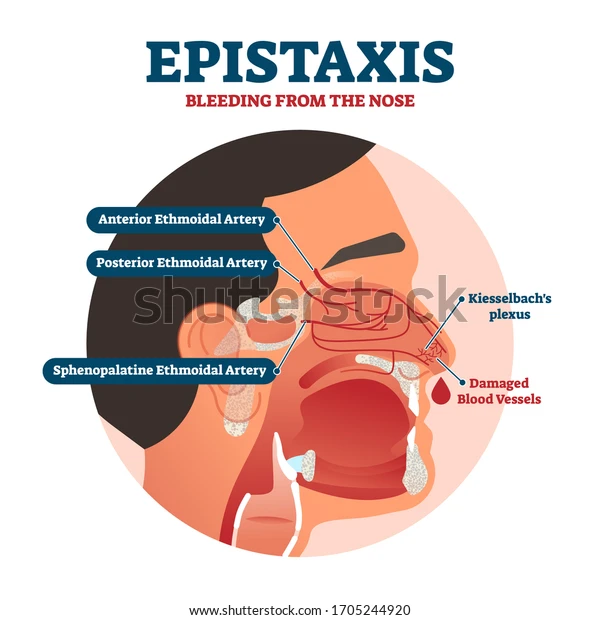Epistaxis (Nosebleed)
Epistaxis or nosebleed as it is commonly known is a disorder of the nose, whereby you experience bleeding from inside the nose. The purpose of the nose is to warm and humidify the air we breathe in, and it is lined with many blood vessels to help fulfil this purpose. Nosebleeds occur when one of these blood vessels within the nose burst, leading to bleeding from the nose. A nose bleed may seem frightening to many, but is rarely life-threatening and stops on its own in most cases. However, frequent or severe nosebleed that does not stop after a few minutes needs to be evaluated by an ENT (Eye-Nose-Throat) specialist.
Epistaxis is more common among children and older people. Common causes of nosebleeds include dry, heated indoor air or hot, low-humidity climates which dry out the mucus membranes and nasal linings. Besides that, cold, sinusitis or allergic nasal disorders, such as rhinitis, can also cause nosebleeds as you may frequently sneeze, cough and blow your nose due to these disorders. Similarly, vigorous blowing or rubbing of the nose, injury to the nose or the face and inserting foreign objects into the nose may also cause nosebleeds by damaging the blood vessels in the nose.

Other causes of epistaxis include the use of blood-thinning medications, such aspirin, high blood pressure, allergy to certain chemical substance, such as industrial chemicals, having a deviated nasal septum, facial or nasal surgery, frequent use of nasal sprays and nasal polyps. Contrary to the common misconception, nosebleeds are not a symptom of high blood pressure, though having high blood pressure can aggravate this condition.
There are two types of nosebleeds – anterior (front) and posterior (back). If you suffer from anterior nosebleeds, blood will drip out from the nostrils. In posterior nosebleeds, blood will drip down the throat through the nose. Anterior nosebleeds are scarier for patients, and affect children more. Posterior nosebleeds are more common among older people whose blood vessels become hardened and break.
Symptoms
The most obvious symptom of a nosebleed is blood oozing out of the nose. In some cases, blood may even flow down the throat. General symptoms of epistaxis are:
- Bleeding from one nostril.
- In case of heavy nosebleeds, blood may fill up both nostrils, eventually leading to bleeding from both nostrils.
- Spitting or vomiting blood in cases of posterior nosebleeds when blood flows down the throat.
- Dizziness and confusion.
- Weakness in case of significant blood loss.
These symptoms of a nosebleed usually subside within twenty to thirty minutes. In case symptoms persist longer than that without any lessening of the blood flow, you must consult an ENT specialist at Kotli healthcare center.




